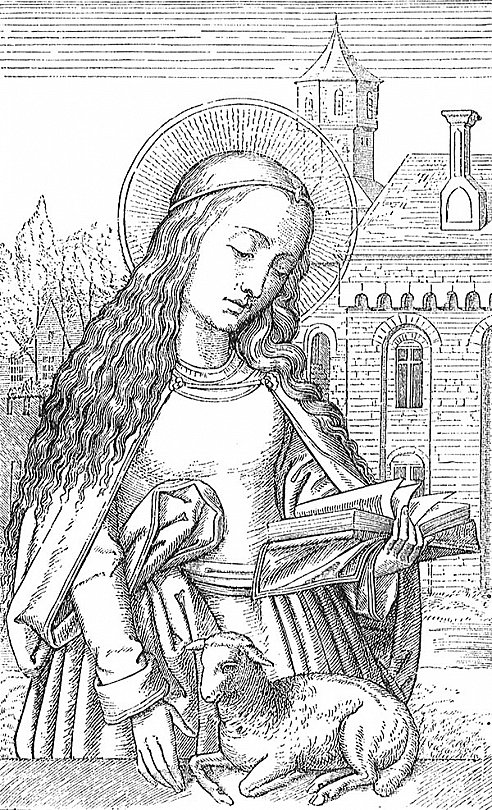Thirteen-Year-Old Agnes Died in Rome for Her Faith

An artist’s imaginary portrait of Agnes of Rome.
WHEN AGNES WAS A GIRL of twelve in fourth-century Rome, boys began vying for her hand in marriage. Thirteen was a common age for a girl to marry in those days, especially if her family were well-to-do. Agnes, it seems, was from a noble family. However, she was not interested in marriage. Having become a Christian, she was devoted to Christ.
According to a persistent legend, one of her suitors was named Symphronious, the son of a prefect (Roman magistrate). His desire for the girl drove him to distraction. When the prefect learned of this, he brought Agnes in and pleaded with her to marry his son. She refused, revealing that she was a Christian.
The prefect ordered Agnes to sacrifice to Vesta, the virgin goddess of hearth and home. When she made the sign of the cross instead, he was furious. Tradition says he tried to break her spirit by throwing her into a public whorehouse. At the very least, he humiliated her. Bishop Ambrose of Milan (who lived later in the same century) said the prefect had her stripped naked. Despite this effort to shame her, Agnes clung to her integrity and her faith.
Next the prefect is supposed to have threatened to burn the girl alive, but the fire would not burn her. Whether fire was merely a threat, or the wood slow to catch fire, we do not know. She died on this day, 21 January 304,* when an executioner either stabbed her in the throat or cut off her head. Accounts vary.
The execution shocked Rome. Romans asked what was so threatening about a thirteen-year-old girl, especially since the law forbade execution of virgins. That a young girl should be killed merely over a refusal to marry outraged nobler-minded citizens. Agnes’s fortitude despite her sex and age made a deep impression on them. Possibly her death helped bring the persecution to an end.
Agnes quickly became a favorite saint. The church added her to its calendar of martyrs. Constantine erected a church at the site of her grave. Pope Damasus wrote an epitaph for her. Prudentius composed a hymn in her honor. Legendary acts (stories of saints) appeared which told about her. Ambrose spoke of her in his book De virginitate (On virginity). John Keats, a Romantic poet, even wrote a poem called “The Eve of St. Agnes” in 1819 about a girl who elopes—an action completely contrary to the spirit of the martyred girl.
The memory of Agnes even affects the consecration of bishops in the Roman Catholic Church. Her symbol is a lamb because her name, which means “pure” in Greek, is similar to the Latin “Agnus,” which means lamb. When popes want to show that a bishop is legitimate, they send him a cloth called a pallium, woven from the wool of lambs consecrated on St. Agnes’ Day.
Agnes’s parents buried her in a tomb on the Via Nomentana. Her bones have been examined by experts who say she really was just thirteen years old.
—Dan Graves
* Some scholars think the evidence points to a third-century execution.
----- ----- -----
watch The Trial and Testimony of the Early Church at RedeemTV
Trial and Testimony can be purchased at Vision Video
Learn more about the trials of the early church in Christian History #27, Persecution in the Early Church








